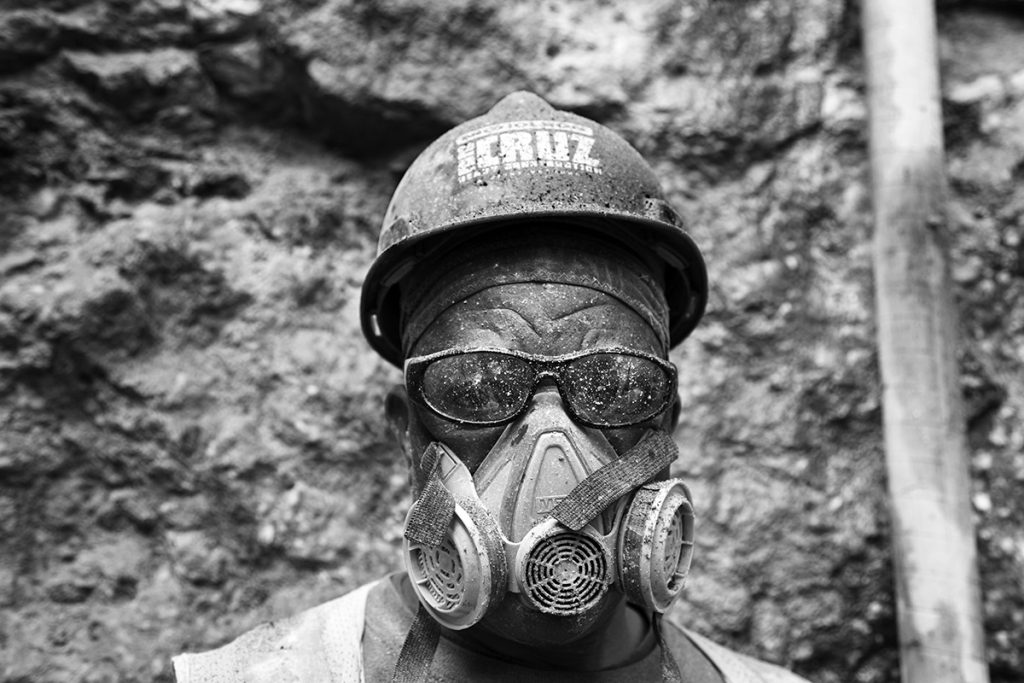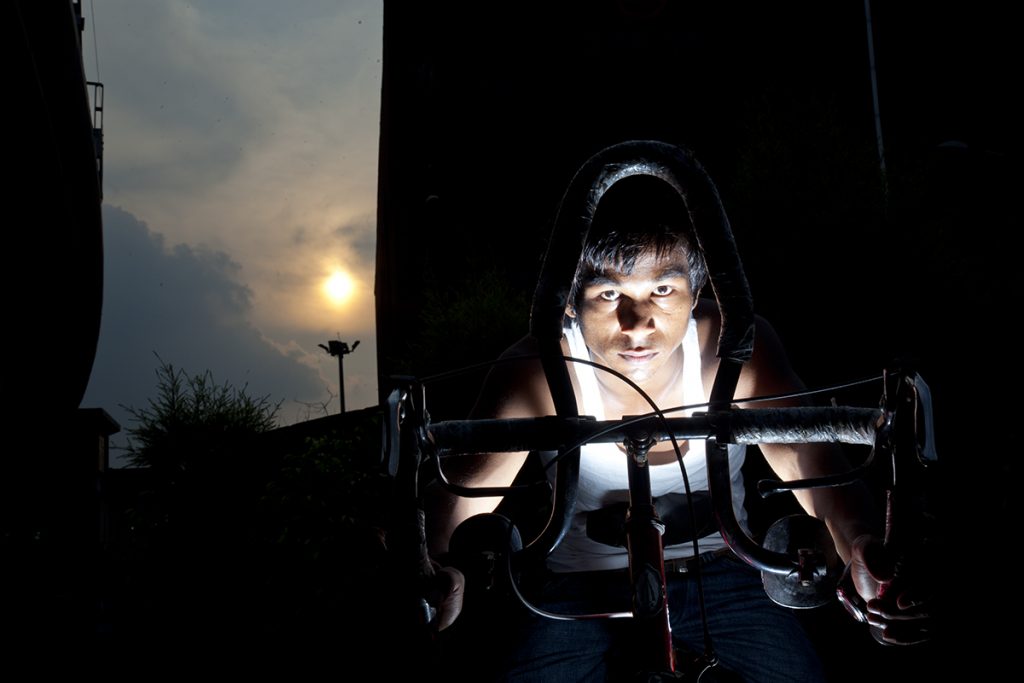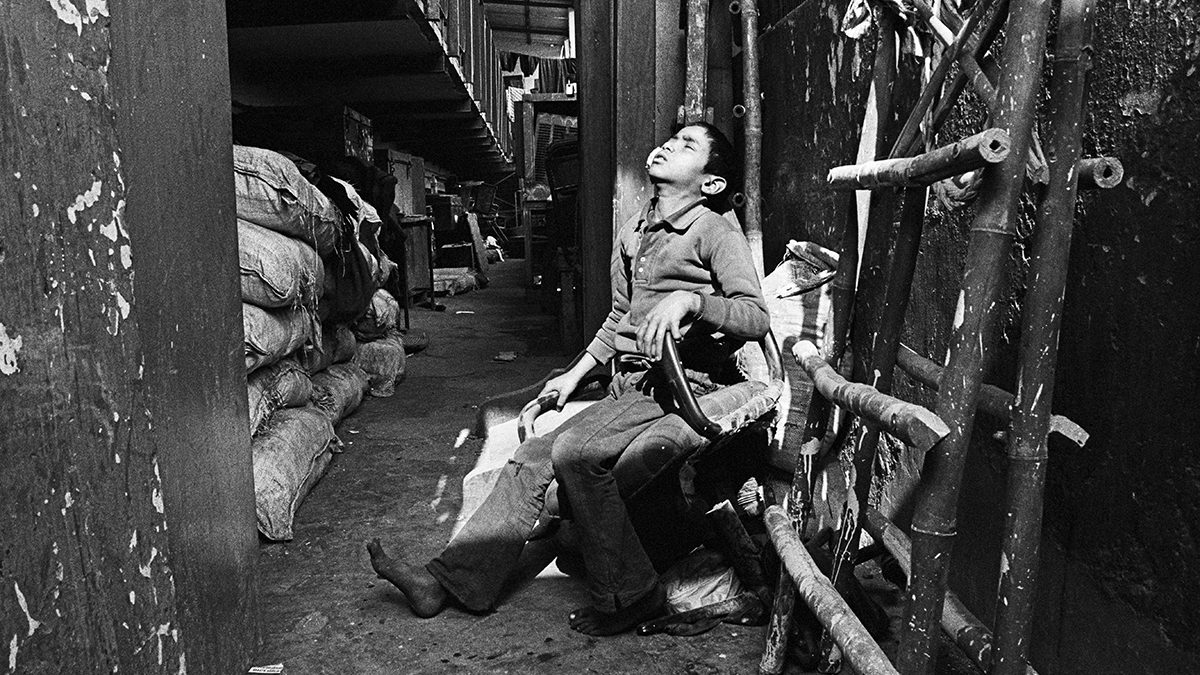Freezing time, and capturing each moment of life from across the world is what Vicky Roy does every day. It is love and passion to tell stories through pictures, and he has been weaving innumerable tales since 2005. Vicky, came to Delhi leaving his grandparents’ home in West Bengal where he had to work rigorously every day. However, as a young kid, who boarded the bus to Delhi, he did not know what the national capital holds for him, nor did he know what he would be doing when the train reaches its destination. But, the sword of destiny was guarding him and leading him to a destination he belongs to.
Vicky worked as a ragpicker in his initial days along with the kids who helped me the first day but later was too tired to work that much. Then he joined as a dishwasher in a Dhaba at Ajmeri Gate. There, he was found by a man and was put into an NGO, Salaam Balak Trust that was formed after the success of Mira Nair’s Salaam Bombay. He grew up in the NGO and it is there where he picked up photography. Read on to know more about his journey as a photographer.
Q. How did you get into social photography?
So, at the NGO I was put into a school and given proper educational care. But, I did not score well in my tenth exam, thus my mentor in the NGO advised me to switch from academics and do some vocational courses. So, I joined Triveni Kala Sangam and also assisted Anay Mann and I got that opportunity and that is when I got into it completely. I was paid 3000 there. I took a loan of 28k from Salaam Balak and bought my first big camera, Nikon 580. So, I had to repay the loan every month, which used to be a good percent of my salary. I used to freelance as waiters at weddings to make my living and keep going.
There I learned so many things, I dedicated everything there. When I started I did not think I would become a photographer, I chose it because I thought I would get to travel a lot. I imagined I would remain an assistant only, but I made it here thanks to my mentors and the people I have come across.
Q. Your forte is social photography, so how do you manage it financially? You could have easily chosen different photography that pays a lot more, why not?
It depends on what you want to do with your life, and how you want to lead it. Money is everywhere. But, how do you want to acquire it? Mostly, I do NGO assignments, which does not pay me a lot, but I am happy at the end of the day.
Also, I freelance and that means I do not have work on most days. I will have to stay free some days as well. But, I feel that my work is relevant, and is not just suited for something commercial. While I travel also, I travel with the NGOs and more, thus it makes it easy and I am content with it.

Q. The work you do is very adventurous at the roots. How do you deal with your mental struggles during such times?
If I am shooting for a subject, I usually shoot it across a period of five years and after that only I decide how it should be published to the world. So, as I work through the day, I can take shots and do other work. This helps me distract myself easily, and put my mind to different things. That time is also necessary to make the best out of what I shoot. In Street of Dreams (his first solo exhibition where he captured children) I can identify all the children in them and what they were doing then. I could speak for hours about it. If I don’t spend this much time, then it would not have the impact and also, there will be no investment that I make. If I simply click pictures as I walk by, that does not do justice. Yes, people do get demotivated as this is such a long process, but when you know what is supposed to be done, you keep moving ahead.
Q. How do you ideate a theme and choose to picture them? Also, do you ask for people’s consent?
I have been doing this for so long now that it comes from experience. An idea might hit when I’m working or going to sleep and it just keeps circling in the mind, and that is when I know. I think of a subject first and then I go about it.
So, usually, when I work with NGOs or homes you don’t need the consent of the people, because institutions have allowed you. But, when I tour and go out, I do explain to people what it is about and they let you in, entertain you for long hours, which actually means they are okay with you picturing them.
Q. Have there been any instances where your photographs have worked as a relief for someone. Someone who has benefitted from the pictures you clicked?
Yes, there have been multiple instances. Once when I was shooting in Simlipal, this boy had no legs because of his parents’ negligence. So, when I asked him what he will be doing in the future for a living, he said, he will open up a shop in the market nearby. I arranged the money for it, and he will be opening his shop.
Similarly, when I had gone for a shoot in MP, people there told me there is no water for them during summer. So, I have this German friend who came to help but we had to arrange 8 lakh rupees for the same. So, we set up an exhibition, sold some of my artwork and we raised that amount.
I wish to help people even more. Once I clicked a picture of a family outside Jama Masjid as part of a Save the Children project. So, when I put up the picture, one of my friends volunteered to help them, and we helped them set up a grocery shop in their native place, Rajasthan.
These are bits of help that come up with just me clicking pictures.

Q. Why are your pictures mostly in a black and white tone, is there a motto behind doing that?
I always shoot something in which the subject of the picture (human story) is the center of the stage. If I’m shooting a picture of a mountain scene you won’t see the subject first, you’ll either notice the sky’s blue or the greenery, so I make sure the subject is predominant in my pictures. Also, I make sure that the pictures do not give a pity vibe. They are always shot in a way where they are happy and come across as powerful. That is the reason my shoots become longer.
Q. What would be your advice to someone who wants to make their passion for art a real living?
I would say if you want to do photography make sure that you spend time learning it. Every degree takes time and so will photography. For you to be good at it, you’ll need to give it the time it needs. Enroll yourself in good places where you can learn the craft and do it the right way!
Vicky has been an expert in the field of photography with many accolades and high-ranking honors. In 2008, he was chosen amongst the four photographers who were invited to document the rebuilding of the World Trade Center. He was part of National Geographic’s first photography reality show and finished in the top 4. He was also part of the Forbes 30 under 30 Asia 2016 list. Currently, he is working on a special project touring the country and capturing stories of the differently-abled, called Everybody is Good At Something.


